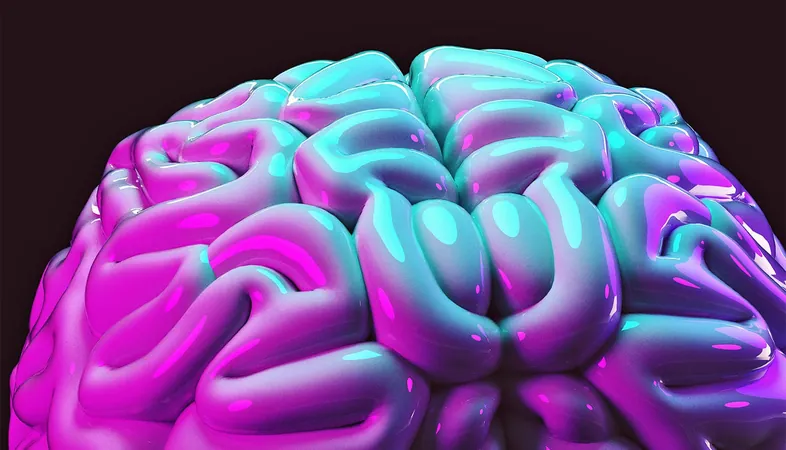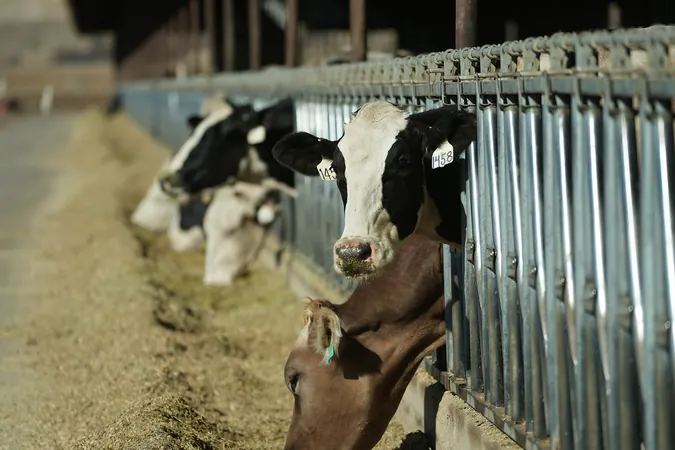
Breakthrough Research Reveals Potential for Healing in Huntington’s Disease Through New Neuron Growth
2025-04-07
Author: John Tan
Breakthrough Research on Neuron Growth in Huntington’s Disease
Recent groundbreaking research has unveiled the astonishing ability of the adult brain to generate new neurons capable of integrating into vital motor circuits. This pivotal finding indicates that stimulating innate brain processes could pave the way for repairing damaged neural networks associated with Huntington’s disease and other neurodegenerative conditions.
Lead researcher Abdellatif Benraiss, a prominent figure in the study published in Cell Reports, emphasized the significance of the discovery: “Our research demonstrates that we can motivate the brain’s inherent cells to produce new neurons that seamlessly integrate into the circuits responsible for movement. This discovery may offer fresh avenues to restore brain function and slow disease progression.”
The History of Neurogenesis Understanding
For many years, it was a widely held belief that adult brains lost their ability to generate new neurons after a certain stage of development. However, current understanding reveals that certain areas of the adult brain contain progenitor cells—reservoirs that can evolve into new neurons. These progenitor cells typically produce glial support cells shortly after birth rather than more neurons.
One critical area where these progenitor cells gather is the ventricular zone, adjacent to the striatum, a brain region heavily impacted by Huntington’s disease. The concept of adult neurogenesis—the brain's ability to create new neurons—was initially brought to light by Goldman and colleagues in the 1980s while studying neuroplasticity in canaries. Remarkably, songbirds such as canaries can produce new neurons as they learn new songs, highlighting an extraordinary adaptability.
Recent Advances in Neurogenesis Research
Building on this foundation, Goldman’s lab has demonstrated that introducing proteins like brain-derived neurotrophic factor (BDNF) and Noggin to progenitor cells can spur the generation of new neurons in mice brains. These newly formed neurons then migrate to the striatum, developing into medium spiny neurons, which are critically lost in Huntington’s disease. Notably, this transformative ability was also observed in primate studies.
The latest research, conducted using a mouse model of Huntington’s disease, reveals that the newly formed medium spiny neurons successfully connect with the complex networks that govern motor control, effectively compensating for the neurons damaged or lost due to the disease.
Methodologies and Results
The research team utilized genetic tagging methods to monitor the development of these new cells, tracking their integration over time as they formed connections. “Using advanced techniques like electrophysiology and optogenetics, we demonstrated that these neurons are not just formed but can actively restore motor circuits, benefiting both healthy mice and those affected by Huntington’s,” stated Jose Cano, a postdoctoral associate and lead author.
Future Implications of Neuroregenerative Strategies
The study's findings suggest that promoting the brain's ability to generate new, functional neurons may represent a promising treatment strategy, potentially rejuvenating the communication pathways critical for movement in individuals afflicted by Huntington's disease.
Moreover, the persistence of these progenitor cells in adult primate brains lends credence to a regenerative approach as a viable therapeutic strategy for Huntington's and similar disorders marked by striatal neuron loss. Benraiss noted that integrating this novel approach with existing cell replacement therapies could enhance treatment efficacy.
Research in Goldman’s lab also highlights the role of dysfunctional glial cells, particularly astrocytes, in the progression of Huntington’s disease. Efforts to replace unhealthy glial cells with healthy counterparts are currently undergoing preclinical development, showing promise in slowing the advancement of the disease in mouse models.
Conclusion and Future Directions
The implications of this research could reshape the treatment landscape for neurodegenerative diseases. With continued exploration and support from entities like CNS2, Inc., the Huntington Disease Golf Classic, and the Hereditary Disease Foundation, the pursuit of advanced therapeutic options is more hopeful than ever.


 Brasil (PT)
Brasil (PT)
 Canada (EN)
Canada (EN)
 Chile (ES)
Chile (ES)
 Česko (CS)
Česko (CS)
 대한민국 (KO)
대한민국 (KO)
 España (ES)
España (ES)
 France (FR)
France (FR)
 Hong Kong (EN)
Hong Kong (EN)
 Italia (IT)
Italia (IT)
 日本 (JA)
日本 (JA)
 Magyarország (HU)
Magyarország (HU)
 Norge (NO)
Norge (NO)
 Polska (PL)
Polska (PL)
 Schweiz (DE)
Schweiz (DE)
 Singapore (EN)
Singapore (EN)
 Sverige (SV)
Sverige (SV)
 Suomi (FI)
Suomi (FI)
 Türkiye (TR)
Türkiye (TR)
 الإمارات العربية المتحدة (AR)
الإمارات العربية المتحدة (AR)